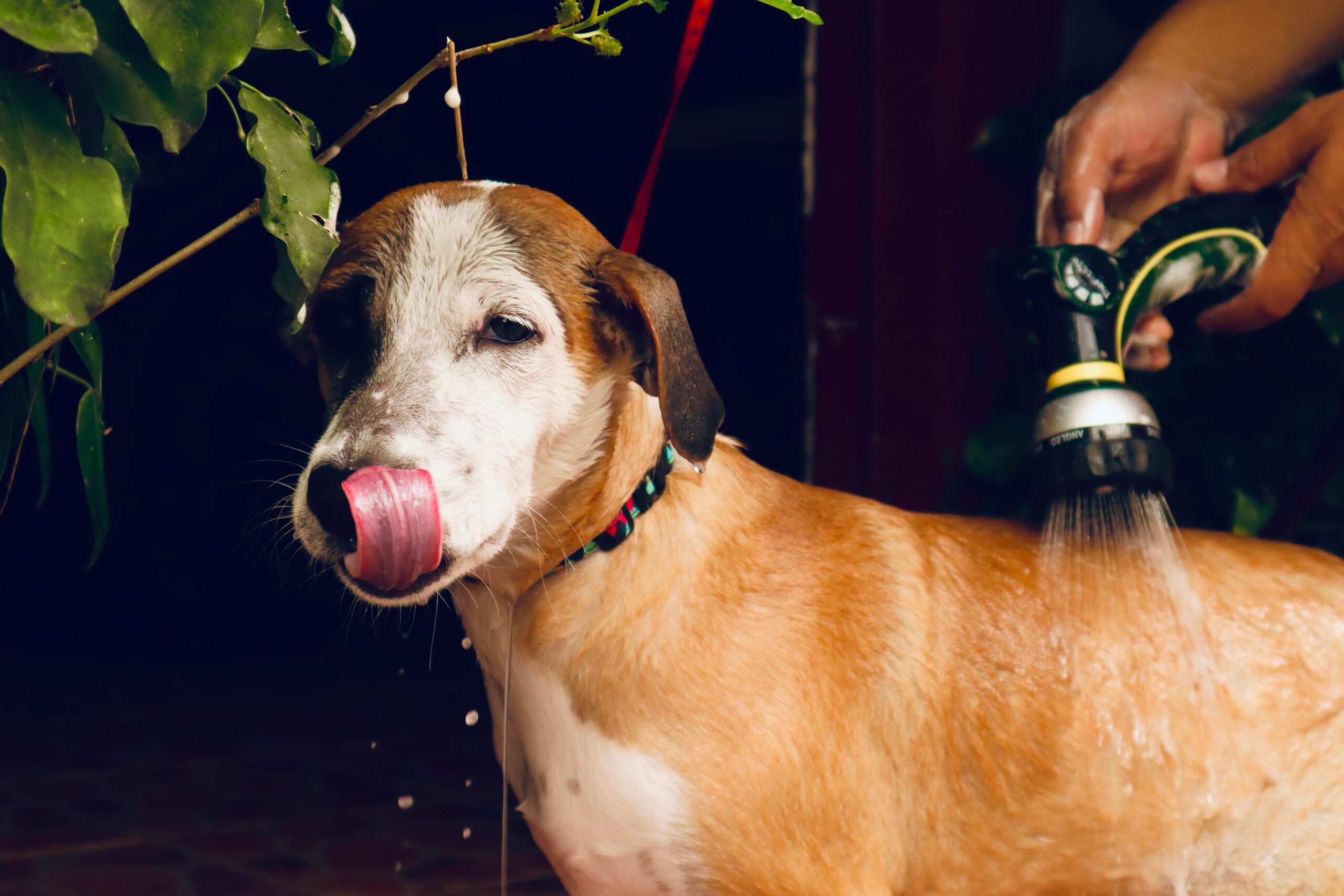Bathing your dog at home can be a rewarding experience — both for you and your pet. It’s a chance to bond, keep your dog clean, and monitor their health. But for many owners, bath time turns into a stressful, messy event. Whether it’s a wriggling dog, a soaked bathroom, or the fear of doing something wrong, bathing your dog requires a thoughtful and gentle approach.
In this article, you’ll learn how to safely and effectively bathe your dog at home, using simple techniques and tools that work for both you and your furry companion.
Why regular baths matter
Bathing plays an important role in your dog’s overall health. It helps:
- Remove dirt, allergens, and dead skin
- Control odor and shedding
- Prevent matting and tangles in the coat
- Detect skin issues or parasites early
- Strengthen the bond between you and your pet
However, bathing too often can dry out your dog’s skin and coat. The ideal frequency depends on factors like breed, coat type, activity level, and whether your dog has skin conditions. On average, once every 4 to 6 weeks is suitable for most dogs.
Choose the right location
Where you bathe your dog depends on their size and your home setup:
- Small dogs can be bathed in a sink or large plastic tub
- Medium to large dogs are best bathed in a bathtub, walk-in shower, or even outside with a hose (weather permitting)
Always ensure the surface is non-slip. You can use a rubber bath mat or a towel to prevent your dog from slipping and panicking.
Prepare everything before starting
Before bringing your dog in, gather all your supplies to avoid stepping away mid-bath. You’ll need:
- Dog-specific shampoo (never use human shampoo)
- Towels (at least two — one for drying, one for under the dog)
- A detachable shower head or plastic cup for rinsing
- A brush or comb suitable for your dog’s coat
- Cotton balls for ears (optional, to prevent water from getting inside)
- Treats for positive reinforcement
- A hairdryer on a low, cool setting (optional for thick-coated breeds)
Brush before the bath
Brushing your dog before bathing helps remove loose hair and tangles. This is especially important for long-haired breeds, where mats can become worse when wet.
Gently work through any knots, starting from the ends and moving toward the base. Be patient — this step makes washing and drying easier and more effective.
Use lukewarm water
Dogs are sensitive to temperature. Always test the water first — it should be lukewarm, not hot or cold. If using a shower or hose, let it run for a few seconds to reach a consistent temperature.
Start wetting your dog from the neck down, avoiding their face and ears initially. Use calm, reassuring words throughout.
Shampoo properly
Wet your dog thoroughly, then apply dog shampoo along their back. Massage it into the coat using your fingers, making sure to reach:
- The underside and belly
- Between the toes
- Around the tail
- Behind the ears (careful not to get water or shampoo inside)
Be gentle and avoid getting shampoo in your dog’s eyes, nose, or mouth. For the face, use a damp cloth or a small amount of diluted shampoo and wipe carefully.
Let the shampoo sit for 2–3 minutes before rinsing — this allows it to fully clean the skin and coat.
Rinse thoroughly
Leftover shampoo can cause irritation or itching. Rinse your dog completely with clean water until no soap remains. Run your fingers through their coat to make sure you’re not missing any hidden suds.
Don’t forget to rinse the chest, underarms, and inside the back legs — these areas are easy to overlook.
Dry your dog with care
Once rinsed, wrap your dog in a large towel and gently pat dry. Avoid rubbing too hard, especially with short-haired breeds. Some dogs will try to shake off water — be ready!
For dogs with thick or long coats, use a hairdryer on the cool or warm setting (never hot) to avoid skin burns. Always keep the dryer moving and hold it at least 30 cm (12 inches) from the skin.
If your dog is afraid of dryers, you can let them air dry in a warm room, but brushing is essential to avoid tangles.
Clean the ears (if needed)
Only clean your dog’s ears if you’re confident and have proper guidance. Never insert cotton swabs into the ear canal. Use a dog-safe ear cleaning solution and a cotton pad to gently wipe the outer part of the ear.
Reward and praise
Bath time should be a positive experience. After drying your dog, give them their favorite treat, toy, or cuddle session. Praise helps build a positive association with future baths.
Over time, most dogs learn that bath time isn’t so bad — especially when it’s followed by love and rewards.
Special considerations for puppies and senior dogs
- Puppies may be more sensitive to temperature and sounds. Keep baths short, gentle, and calm.
- Senior dogs may have arthritis or skin issues. Use soft movements and provide a non-slip surface to prevent injury. Speak with your vet if you’re unsure how often to bathe an older dog.
Common mistakes to avoid
- Using human shampoo or harsh soaps
- Bathing too frequently and drying out the skin
- Not brushing before or after the bath
- Forgetting to rinse thoroughly
- Getting water into the ears or eyes
- Forcing a scared dog into the tub
Bathing at home builds trust
With the right tools and attitude, bathing your dog at home becomes a time of bonding and care. It’s not just about cleaning — it’s about showing love, building trust, and watching over your pet’s health and happiness.
With patience, practice, and preparation, bath time can turn into one of the most enjoyable parts of your routine together.

